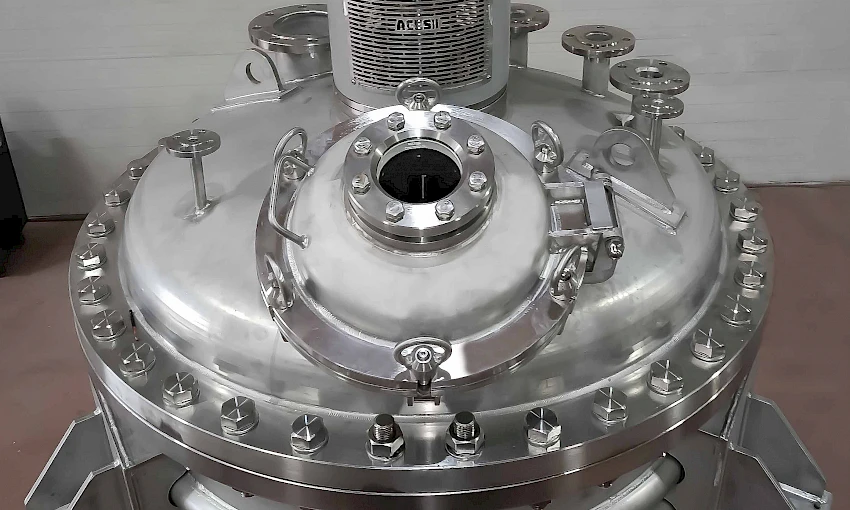Effective Solutions for Maintaining the Performance of Double-Layer Stainless Steel Reactors
Effective Solutions for Maintaining the Performance of Double-Layer Stainless Steel Reactors
Effective Solutions for Maintaining the Performance of Double-Layer Stainless Steel Reactors
Double-layer stainless steel reactors play a crucial role in various industries, such as pharmaceuticals, chemicals, and food processing. These reactors are highly valued for their durability, versatility, and precision. However, like any other industrial equipment, they are prone to encountering problems that can hinder performance. Troubleshooting common problems in double-layer stainless steel reactors is essential for maintaining smooth operations. In this guide, we will discuss the most common issues faced with double-layer stainless steel reactors and provide practical solutions for effective troubleshooting.
What is a Double-Layer Stainless Steel Reactor?
A double-layer stainless steel reactor is a vessel used in chemical and industrial processes where reactions require controlled heating, cooling, and agitation. The reactor is designed with an outer and inner layer, typically made of stainless steel, offering enhanced durability and thermal insulation. The space between the two layers can be filled with a heating or cooling medium, allowing precise temperature control, which is crucial for maintaining the integrity of sensitive chemical reactions.

Troubleshooting Common Problems in Double-Layer Stainless Steel Reactors: Key Issues and Solutions
- Leakages in the Reactor
One of the most frequent issues that arise with double-layer stainless steel reactors is leakage. This can be caused by several factors, including improper sealing, damage to gaskets, or stress from pressure changes. Leakage compromises the reactor’s ability to maintain internal pressure and could lead to contamination or hazardous situations.Troubleshooting Tip:
To troubleshoot leaks, inspect the reactor’s gaskets and seals. Check for wear and tear, and replace any damaged components. Also, ensure that the bolts and flanges are tightened correctly, as improper sealing can often lead to leaks. Perform pressure tests to locate the source of the leak and ensure the integrity of the reactor system. - Inefficient Heating or Cooling
Double-layer stainless steel reactors rely on the external jacket to heat or cool the contents inside. If the heating or cooling mechanism malfunctions, it can lead to inefficient reactions, extended processing times, or failure to reach desired temperatures.Troubleshooting Tip:
The first step in troubleshooting heating or cooling inefficiency is to check the heat exchanger and circulation pump. Ensure the fluid circulating through the jacket is at the correct temperature and pressure. If you find any blockages or inconsistencies in the system, clean or replace the components as necessary. Additionally, check the jacket for any visible signs of damage or leakage that may affect its performance. - Improper Stirring or Agitation
Agitation is crucial in double-layer stainless steel reactors, as it ensures proper mixing of ingredients during chemical reactions. If the stirrer is not functioning properly, it can lead to incomplete reactions and inconsistent product quality.Troubleshooting Tip:
Begin troubleshooting common problems in double-layer stainless steel reactors related to agitation by inspecting the agitator motor and checking for any blockages in the stirring mechanism. Ensure that the stirrer blades are in good condition and properly aligned. If the agitator motor is faulty, it may need repair or replacement. - Excessive Pressure or Vacuum Issues
Double-layer stainless steel reactors are designed to handle specific pressure and vacuum ranges. If the reactor is experiencing excessive pressure or is unable to maintain a vacuum, it could indicate a malfunction in the pressure or vacuum control system.Troubleshooting Tip:
Troubleshooting pressure-related issues often involves checking the pressure relief valve and safety valve. Ensure that both valves are functioning properly and are calibrated to the correct pressure settings. Inspect the vacuum pump for any signs of wear and make sure that all connections are sealed. Additionally, check for any blockages in the pressure control system that could prevent proper operation. - Contamination and Corrosion
Over time, corrosion or contamination may affect the efficiency of double-layer stainless steel reactors. Exposure to aggressive chemicals, temperature extremes, or improper cleaning can cause damage to the reactor’s surface.Troubleshooting Tip:
To prevent contamination and corrosion, perform regular inspections to detect early signs of rust or corrosion on the reactor’s surface. Clean the reactor thoroughly after each use, following manufacturer guidelines for cleaning agents and procedures. Use appropriate protective coatings to enhance the reactor’s resistance to corrosion and ensure a longer lifespan. - Malfunctioning Sensors and Control Systems
Many modern double-layer stainless steel reactors are equipped with sensors and automated control systems to monitor variables such as temperature, pressure, and reaction progress. A malfunctioning sensor or control system can lead to inaccurate readings, resulting in improper reactor conditions.Troubleshooting Tip:
If sensors are giving inaccurate readings, start by calibrating them according to the manufacturer’s guidelines. Inspect the wiring and connections to ensure there is no damage or corrosion. If the issue persists, it may be necessary to replace the faulty sensor or control system component.
Preventative Maintenance for Double-Layer Stainless Steel Reactors
Preventative maintenance is key to avoiding the need for frequent troubleshooting. By performing regular inspections, cleaning, and servicing of your double-layer stainless steel reactor, you can significantly reduce the likelihood of encountering common problems.
Tips for Preventative Maintenance:
- Schedule routine inspections to check for leaks, corrosion, and wear on seals and gaskets.
- Regularly clean and replace filters in the heating or cooling system.
- Calibrate sensors and control systems to maintain accurate readings.
- Replace worn-out agitator blades or motors before they cause problems.
- Ensure that all valves, pumps, and other components are functioning properly.
Conclusion
Troubleshooting common problems in double-layer stainless steel reactors is an essential skill for operators and maintenance teams. By understanding the typical issues that can arise, such as leaks, inefficient heating, and agitation problems, and knowing how to address them, you can extend the life of your equipment and ensure consistent, high-quality production. Regular maintenance and quick action when problems arise will keep your double-layer stainless steel reactors running efficiently for years to come.
Explore Double-Layer Stainless Steel Reactors at EquilRxnLab



